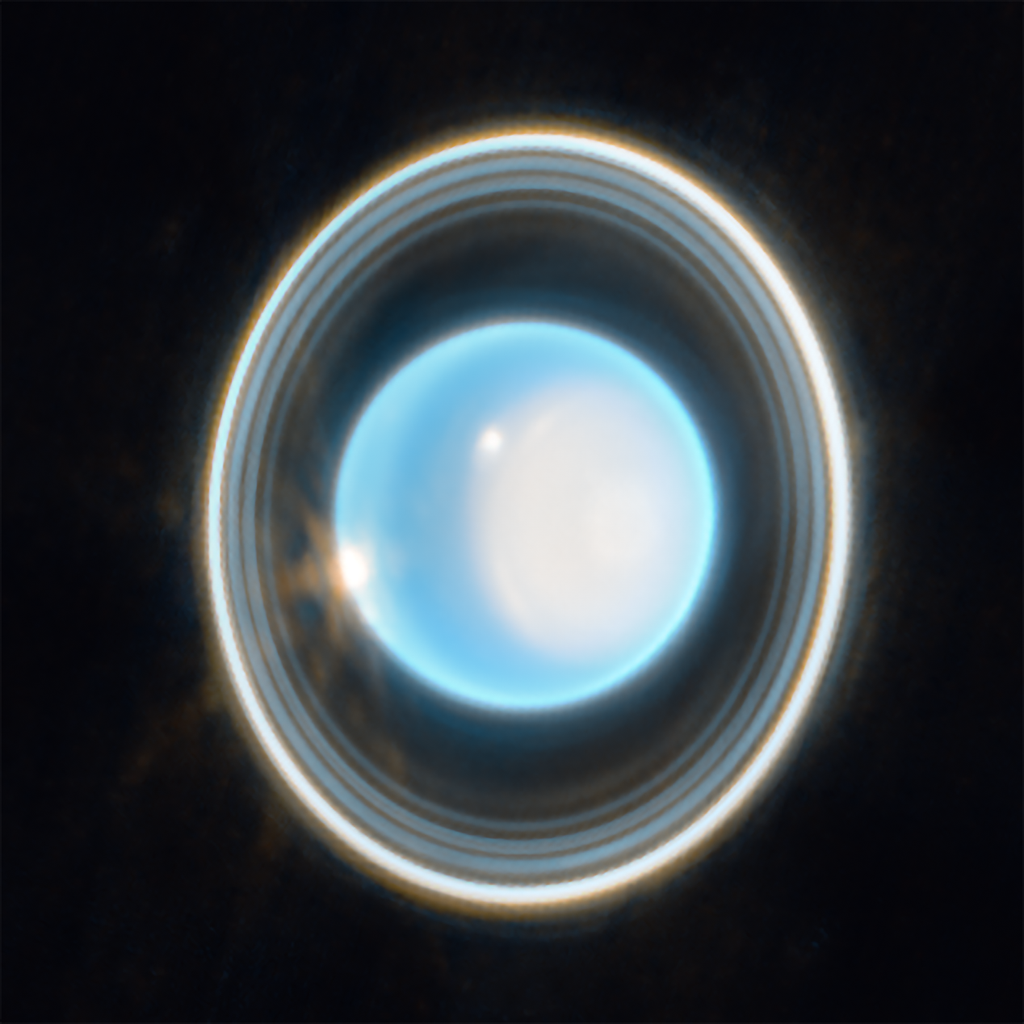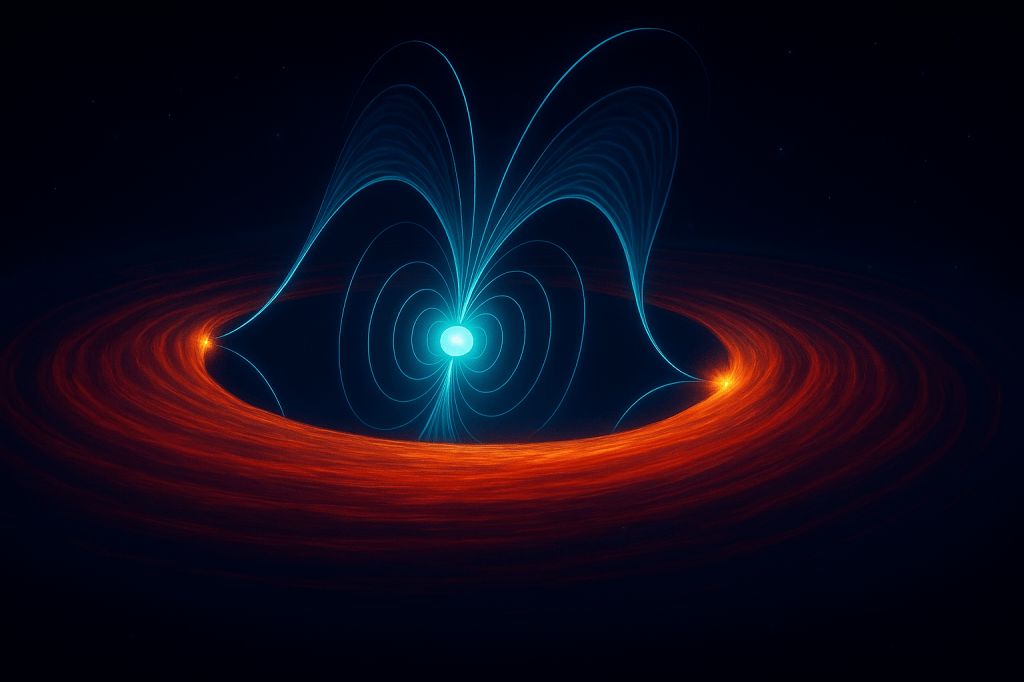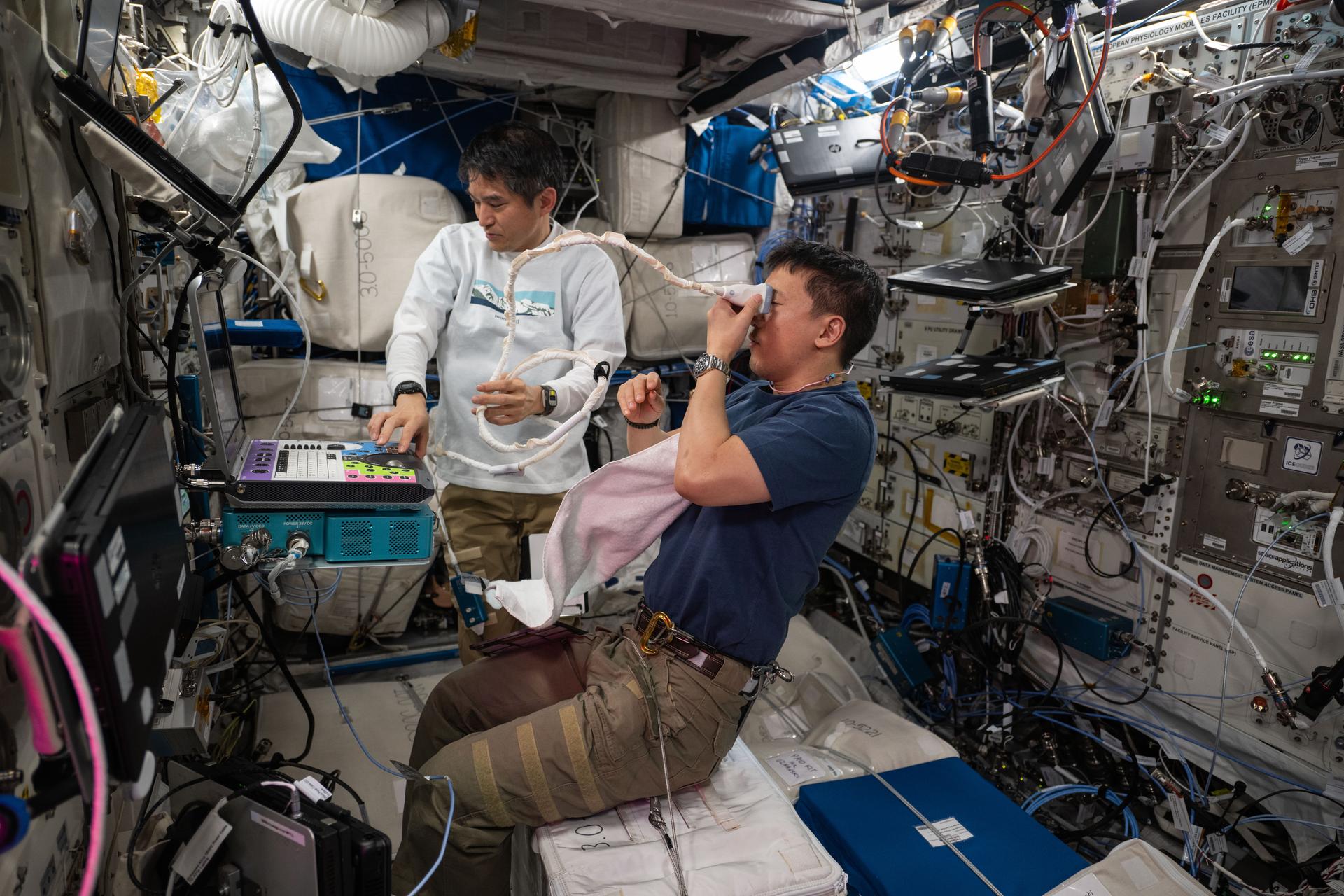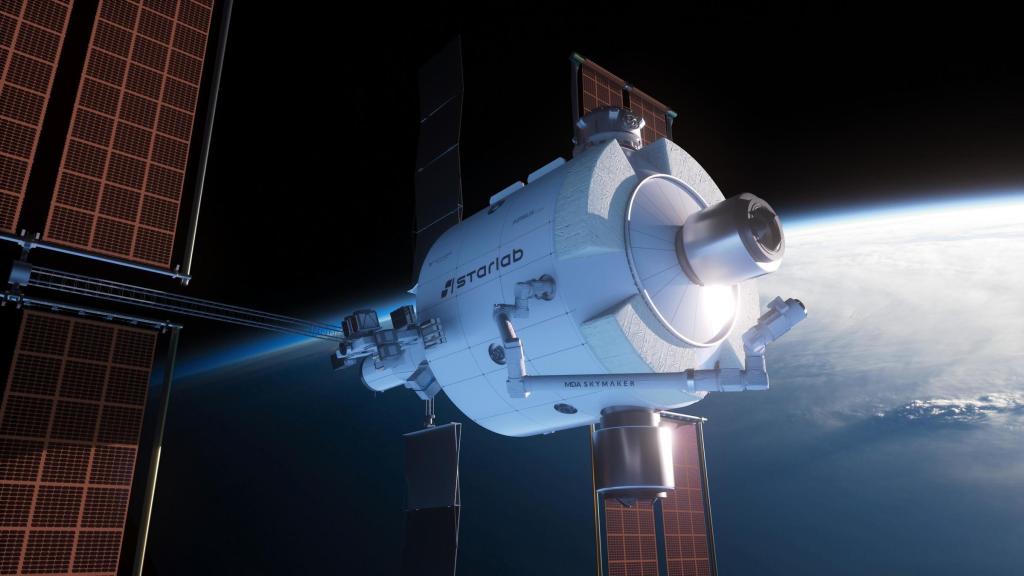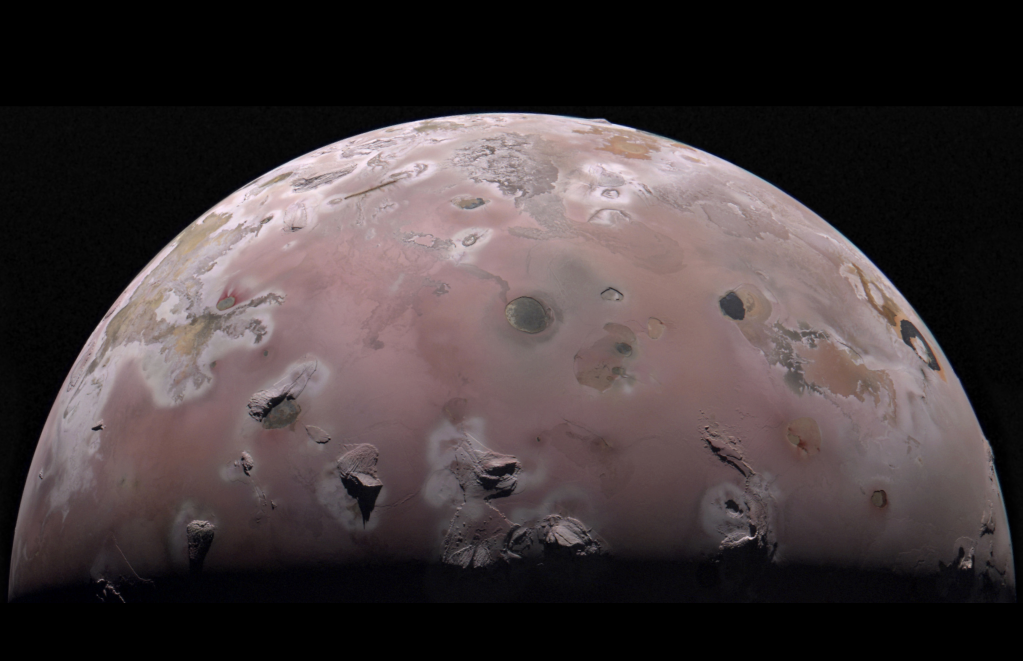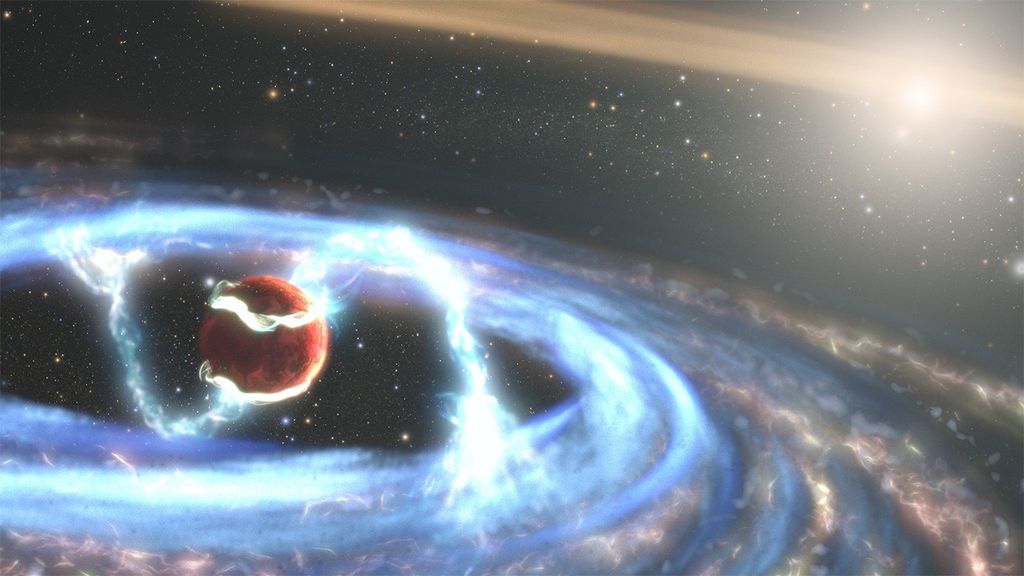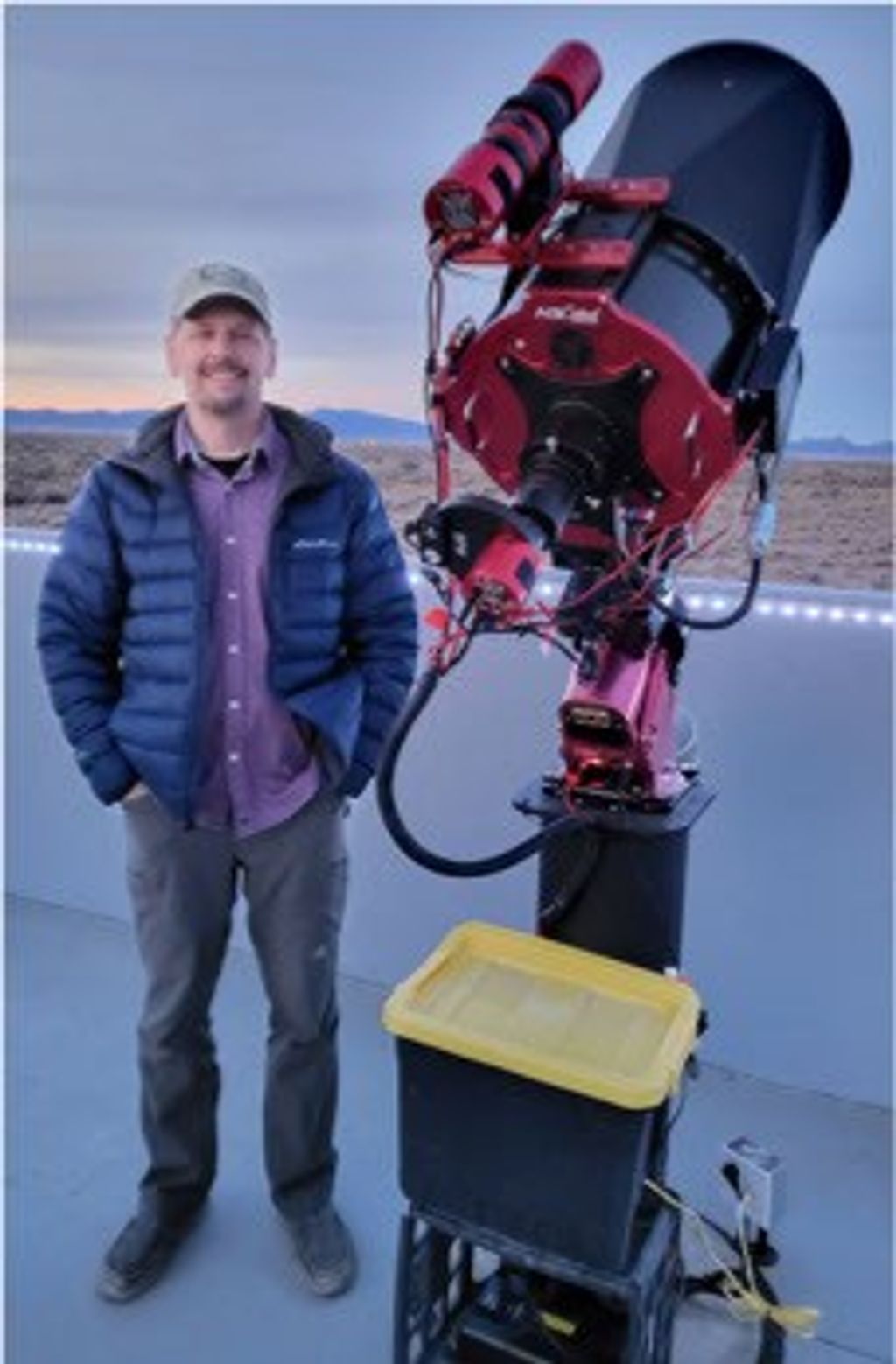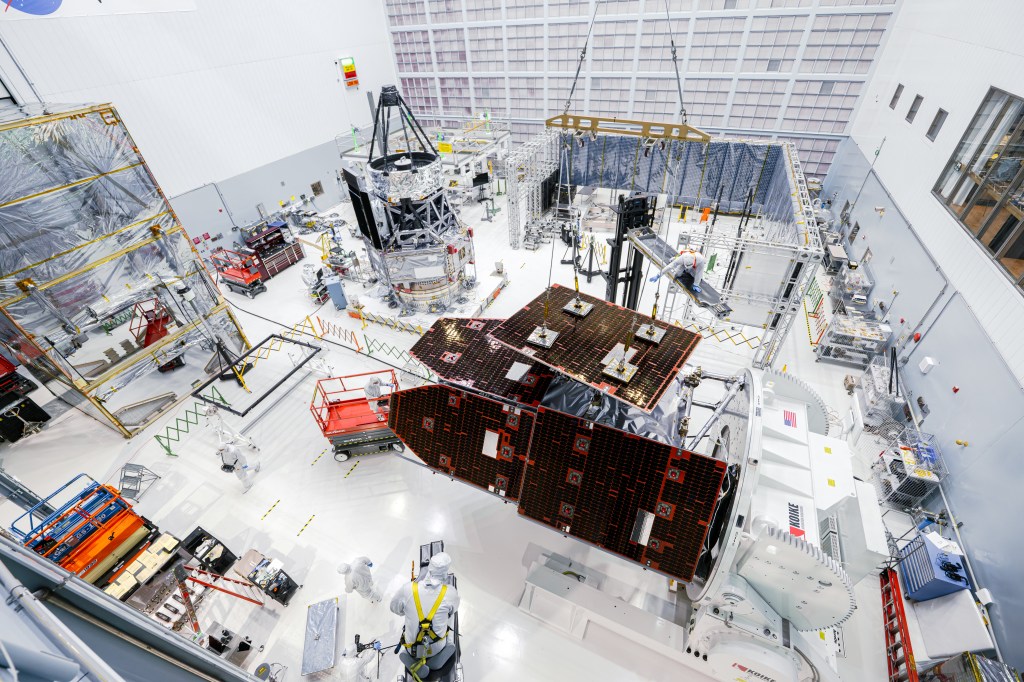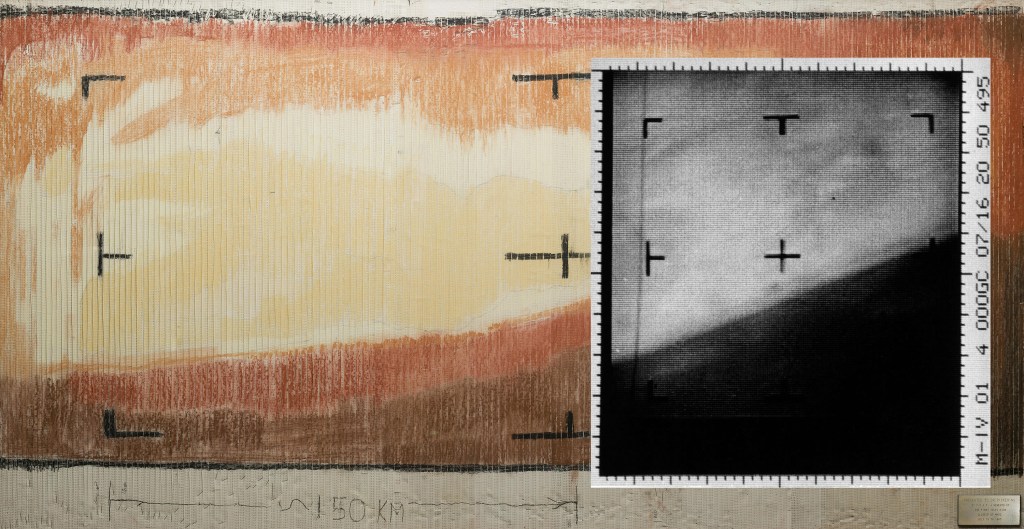1 min read
Comet Linear – C/1999 S4 (July 6, 2000)

About the Object
- DistanceDistanceThe physical distance from Earth to the astronomical object. Distances within our solar system are usually measured in Astronomical Units (AU). Distances between stars are usually measured in light-years. Interstellar distances can also be measured in parsecs.On July 5, 2000 the comet was at a distance of 74 million miles (120 million km) from Earth.
About the Data
- Data DescriptionData DescriptionProposal: A description of the observations, their scientific justification, and the links to the data available in the science archive.
Science Team: The astronomers who planned the observations and analyzed the data. "PI" refers to the Principal Investigator.Principal Astronomers: Comet LINEAR investigation team: H. Weaver and P. Feldman (JHU), M. A'Hearn (Univ. of Maryland), C. Arpigny (Liege Univ.), J. Bauer (Univ. of Hawaii), M. Combi (Univ. of Michigan), J. Davies (Joint Astronomy Centre), M. Festou (Observatoire Midi-Pyrenees), M. Keesey (JPL), P. Lamy (Laboratoire d'Astronomie Spatiale), C. Lisse (STScI), B. Marsden (SAO), K. Meech (Univ. of Hawaii), Z. Sekanina (JPL) , I. Toth (Konkoly Observatory) , G.-P. Tozzi (Arcetri Observatory), D. Yeomans (JPL). - InstrumentInstrumentThe science instrument used to produce the data.HST>STIS
- Exposure DatesExposure DatesThe date(s) that the telescope made its observations and the total exposure time.July 6, 2000, Exposure Time: 5 minutes
- FiltersFiltersThe camera filters that were used in the science observations.F28X50LP
- Object NameObject NameA name or catalog number that astronomers use to identify an astronomical object.Comet LINEAR (Lincoln Laboratory Near-Earth Asteroid Research); C/1999 S4
- Object DescriptionObject DescriptionThe type of astronomical object.Comet
- Release DateJuly 28, 2000
- Science ReleaseHubble Sees Comet Linear Blow its Top
- CreditNASA, H. Weaver and P. Feldman (Johns Hopkins University), M. A'Hearn (University of Maryland), C. Arpigny (Liege University), M. Combi (University of Michigan), M. Festou (Observatoire Midi-Pyrenees), and G.-P. Tozzi (Arcetri Observatory)
Related Images & Videos
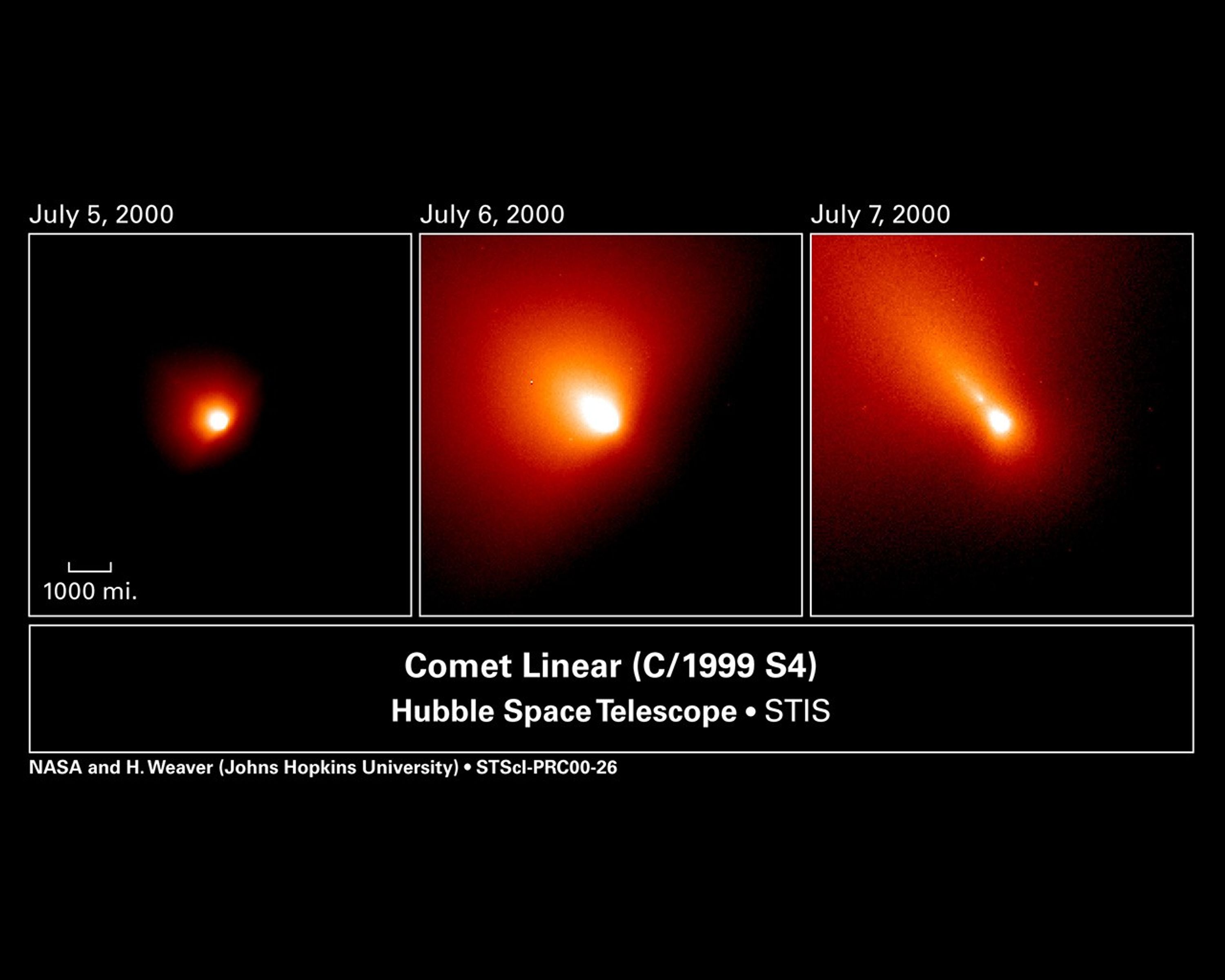
Comet LINEAR's Violent Outburst
These three photographs taken with NASA's Hubble Space Telescope chronicle a violent outburst in the life of comet LINEAR, also known as C/1999 S4. The orbiting observatory's Space Telescope Imaging Spectrograph tracked the streaking comet for two days, July 5 to 7, capturing a...
Share
Details
Last Updated
Mar 28, 2025
Contact
Media
Claire Andreoli
NASA’s Goddard Space Flight Center
Greenbelt, Maryland
claire.andreoli@nasa.gov


